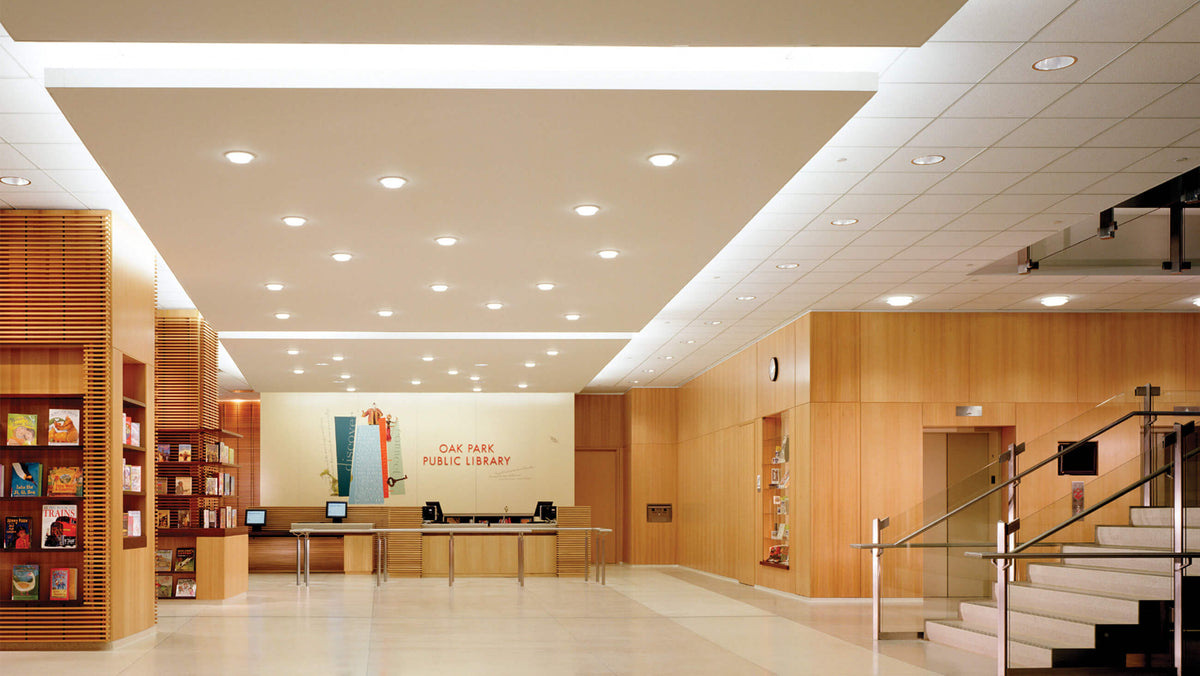Building Trust, Branding Environments with Eva Maddox

Article originally published on Haworth Spark
Innovator. Designer. Visionary. A pioneer in her industry, Eva Maddox pushed the boundaries of design.
One of her early breakthrough designs was for Chicago Mercury Records in the 1972 Mies van der Rohe IBM building. This innovative project marked the beginning of her focus on branded environments. “Part of the architecture challenge was how to make it interesting so that when each artist came in, they would feel very special,” she notes. “I tried to figure out how I could use graphics and different things to communicate a message.” This experience then led to a long-term relationship with Polygram, where she designed offices for various music labels.

In high school, Eva Maddox was the only female student in her mechanical drawing class. “Girls didn’t do that,” she says. In college, she was one of the few women to attend the University of Cincinnati School of Architecture and Interior Design—the first steps in a ground-breaking professional journey.
Her earliest influence was her father, who worked as a contractor. “He would come home with wallpaper books, and I would make paper doll clothes and dream about faraway places,” Maddox recalls. This early exposure to design elements laid the foundation for her future career in interior design.
After graduating from the university, Maddox worked at an architectural firm, where she established their first interior design department. Her career took a significant turn when she moved to Chicago and started her own firm, Eva Maddox Associates (EMA). This move coincided with the rise of the corporate world and the construction of iconic buildings such as the John Hancock Center and the Sears Tower. “It was a great place for someone who could do interiors and understood architecture,” she says.
One of her early breakthrough designs was for Chicago Mercury Records in the 1972 Mies van der Rohe IBM building. This innovative project marked the beginning of her focus on branded environments. “Part of the architecture challenge was how to make it interesting so that when each artist came in, they would feel very special,” she notes. “I tried to figure out how I could use graphics and different things to communicate a message.” This experience then led to a long-term relationship with Polygram, where she designed offices for various music labels.
Maddox’s work with showrooms, particularly for Haworth and DuPont, further solidified her reputation. “Showroom work was the absolute best place to create brand and make it functional,” she says. Her firm’s innovative designs, such as the 1983 NeoCon Haworth showroom—with its giant red apple cutouts to showcase products—garnered attention and drove traffic to the space.

Spanning three generations, Maddox’s relationship with Haworth culminated in 2008 with its corporate headquarters renovation and showroom designs around the world. Her persistence and competency in building trust helped take Haworth out of its comfort zone, driving the company toward a complete renovation that would accommodate future growth and sustainable design, while evolving Haworth’s brand.
Maddox also pioneered Branded Environments, a design approach that delves into a client’s DNA to define its brand essence and identify how to convey it in the built environment. It underscores the significance that interior design brings to clients. “Design has value and it has to be expressed in a way that people understand it,” she asserts.
This philosophy extended to her work in healthcare and education, where she integrated brand strategy into the design of spaces like the Children’s Hospital in Cincinnati and Chicago State University. Brand and culture are intertwined, so this approach was especially important for drawing students to higher education institutions. Maddox was instrumental in building the University of Cincinnati’s athletic brand through space design and shaped the stories at historical sites, such as the Intrepid Museum, to chronicle the accounts of this famous aircraft carrier from World War II.

In addition to founding Branded Environments, Maddox was the cofounder of Archeworks, a Design Principal at Perkins+Will, and recipient of numerous awards. Maddox’s influence on the design world is profound. She was inducted into the Interior Design Hall of Fame. Her projects span various sectors, from corporate offices to healthcare and education, each reflecting her commitment to creating environments that communicate and enhance the client’s brand.
Her legacy continues to inspire architects and interior designers to see beyond aesthetics and focus on the impact their work makes for each client.










Some things are too good to keep to yourself.